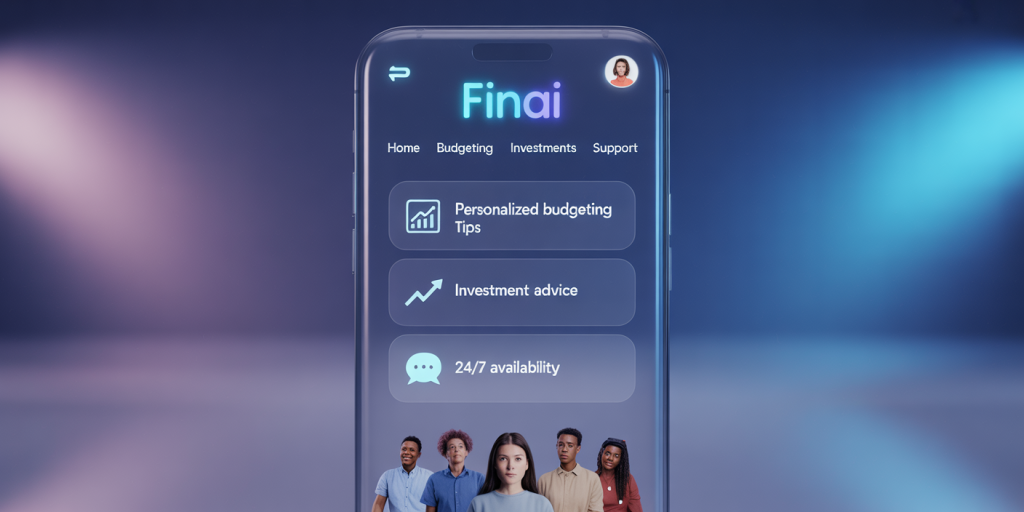How to Use Chatbots for Personal Financial Advice
In recent years, advancements in artificial intelligence and natural language processing have transformed how consumers interact with financial services. Among these innovations, chatbots have emerged as powerful tools offering personalized financial advice at the user’s fingertips. These AI-driven assistants provide accessible, convenient, and cost-effective guidance that can help individuals make better financial decisions without necessarily consulting a human advisor. This article explores how to effectively use chatbots for personal financial advice, highlighting key benefits, practical applications, and future potentials.
The Growing Role of Chatbots in Personal Finance
The global chatbot market size was valued at around $2.6 billion in 2021 and is projected to grow at a compound annual growth rate (CAGR) of 24.3% from 2022 to 2030 (Grand View Research, 2022). This rapid growth is fueled by increasing digital adoption and the need for scalable customer service solutions. In personal finance, chatbots are evolving beyond simple customer support functions toward delivering meaningful financial recommendations.
One significant advantage of financial chatbots is their ability to offer 24/7 assistance, unlike traditional financial advisors bound by office hours. For example, Cleo, a popular AI financial assistant, uses chat-based interactions to help users track expenses, set budgeting goals, and even offer spending insights. According to Cleo’s user data, over 70% of users felt more financially informed after using the bot regularly for three months.
Additionally, chatbots are accessible to a broad demographic, including millennials and Gen Z, who prefer digital-first financial management tools over face-to-face advice. This shift is crucial because nearly 45% of millennials report feeling overwhelmed by financial decisions and often avoid professional advisory services due to time constraints or high fees (PwC, 2022). Chatbots bridge this gap, providing low-cost, personalized advice instantly.
How Chatbots Tailor Financial Advice to Individual Needs
Personalized financial advice is essential because one-size-fits-all strategies rarely work for everyone. Chatbots use algorithms and machine learning to analyze users’ financial data such as income, spending habits, savings, investment goals, and even risk tolerance to generate customized suggestions.
For instance, platforms like Wealthfront and Betterment integrate chatbot technology with robo-advisors. These chatbots engage users in conversations that clarify investment preferences and long-term goals. Based on responses, the bots tailor asset allocation recommendations and rebalancing strategies accordingly. A case study of Wealthfront found that their chatbot-driven approach increased customer engagement by 30% compared to traditional robo-advisor interfaces (Wealthfront Annual Report, 2023).

Practical application extends beyond investment advice. Budgeting chatbots offer real-time expense tracking and proactive alerts that prevent budget overruns. Digit is a mobile app with a chatbot that analyzes users’ cash flow patterns and automatically transfers small amounts to savings, helping people accumulate emergency funds effortlessly. According to the company’s data, Digit users saved on average $2,664 annually without feeling the pinch.
Comparing Human Advisors and Financial Chatbots
Deciding between a human advisor and a chatbot often depends on individual circumstances, financial complexity, and budget. Both have distinct advantages and limitations, which are summarized in the table below:
| Feature | Human Financial Advisor | Financial Chatbot |
|---|---|---|
| Availability | Limited to office hours | 24/7 availability |
| Cost | Higher fees (often 1% of assets) | Low or no cost |
| Personalization | Deeply personalized advice | Automated personalization via data |
| Emotional Intelligence | High; understands emotions | Limited; may misinterpret nuances |
| Speed of Response | Slower due to appointments | Instantaneous |
| Complexity Handling | Excellent for complex scenarios | Best for straightforward advice |
| Privacy and Security | Regulated with fiduciary duty | Secured but reliant on encryption |
While human advisors provide nuanced guidance incorporating emotional factors and complex tax or estate planning, chatbots excel in routine management and educational functions. For example, a middle-income user looking for basic budgeting help or investment initiation may benefit more from chatbot assistance, whereas high-net-worth individuals might still prefer expert human involvement.

Practical Steps to Using Chatbots for Personal Financial Advice
Getting started with chatbot-based financial advice involves selecting an appropriate platform, inputting accurate data, and regularly engaging with the tool. Here are some actionable steps:
1. Choose the Right Chatbot: Various financial chatbots cater to different needs—budgeting, investment, debt management, or financial education. Apps like Cleo and YNAB are excellent for budgeting, while platforms like Wealthfront focus on investing.
2. Provide Accurate Financial Information: Chatbots rely heavily on input data such as income, monthly expenses, debt levels, and financial goals. Users should ensure the data is as accurate and up-to-date as possible for meaningful advice.
3. Engage Consistently: Regular interaction improves chatbot accuracy as machine learning models adapt to spending patterns and preferences over time. The more data fed into the system, the better personalized the advice becomes.
4. Act on Recommendations: AI-driven advice often includes actionable suggestions like setting savings targets or reallocating assets. Implementing these can lead to measurable improvements in financial health.
An illustration of this process is the use of the chatbot Stash, which personalizes investment portfolios based on user input and sends regular reminders to stay on track. Users who adhered to these recommendations reported a 20% improvement in their portfolio returns over one year (Stash User Report, 2023).
Security and Privacy Considerations
When handling sensitive financial data, users must prioritize security and privacy. Reputable financial chatbots comply with strict regulatory standards such as GDPR in Europe and the California Consumer Privacy Act (CCPA) in the U.S. Encryption protocols and two-factor authentication are standard.
For example, the chatbot service offered by major banks like Bank of America’s Erica adheres to stringent security policies to protect user information while leveraging AI for personalized advice.
Despite these protections, users should remain vigilant against phishing scams and avoid sharing chats with sensitive personal details on unsecured networks. Choosing chatbots from credible sources and reading privacy policies carefully are essential steps in safeguarding oneself.
Future Perspectives: AI, Chatbots, and the Evolution of Personal Financial Advice
Looking ahead, financial chatbots are expected to become increasingly sophisticated, leveraging advances in AI such as natural language understanding, sentiment analysis, and predictive analytics. This evolution could enable chatbots not only to advise but also to anticipate financial needs before users articulate them.
Emerging integrations with biometric authentication and blockchain technology may further enhance security and personalization. For instance, future chatbots could identify voice or facial cues to tailor advice dynamically, making interactions more natural.

Moreover, the proliferation of omnichannel experiences—combining voice assistants like Amazon Alexa with chatbot apps—will integrate financial advice into daily life seamlessly. As per a report by Deloitte (2024), nearly 60% of consumers expressed interest in managing finances through voice-activated assistants within the next five years.
Artificial intelligence is also expanding chatbot capabilities into areas like tax optimization, retirement planning, and debt restructuring, thus diminishing the gap between robo-advisors and human consultants.
In summary, the future of personal financial advice will likely be a hybrid ecosystem where chatbots handle routine queries and insights, while human advisors focus on complex, emotional, or bespoke financial planning. This shift promises broader financial inclusion and empowerment through accessible, data-driven insights anytime and anywhere.
